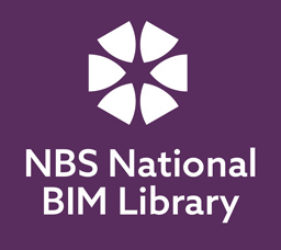
Early BIM investment paying off for SMET
JORIS SMET, MANAGING DIRECTOR OF SMET BUILDING PRODUCTS LTD (SMET) EXPLAINS THE IMPORTANCE OF THE COMPANY’S INVESTMENT IN BIM…
Coinciding with the recent publication of the 2015 NBS National BIM Report, we are celebrating two years since the launch of a range of BIM objects with the NBS National BIM Library.
True to our vision of ‘Bringing European Innovation’ and our entrepreneurial culture of early adoption, we were the first company in the UK dry mortar industry to invest in BIM. Indeed, we were one of the first to invest, along with Kingspan, in those early days. Subsequently, the SMET-authored objects have become some of the most downloaded in the NBS National BIM Library, with over 18,900 downloads by designers and architects since launch.
The 47 high-quality, data-rich SMET objects are listed under Bedding & Underlay, Plasters & Renders, Mortars, Grouts & Slurries, Concrete, Adhesives, and the Admixtures & Additives categories. These products – while not obviously tangible on a finished building – form the substrate upon which all design is created.
We initially chose to host our BIM objects with the NBS National BIM Library for many reasons, including the possibility of being able to offer the authored BIM objects in all major software formats and their first-class authoring service. Clearly we chose wisely as, two years on, this dedicated service, developed and managed by NBS, is now the ‘go-to’ information service provider for designers and architects. This is substantiated by the 2015 NBS National BIM Report findings, which found that ‘two thirds [of designers and architects] tell us that they turn to NBS for information [about BIM]’.*
In our second year, and following the launch of the groundbreaking NBS BIM Object Standard in September 2015, we were delighted to announce that all the SMET BIM objects had been updated in Revit format in collaboration with NBS. Being one of the first companies to have objects which met the new standard further maintained our position at the leading edge of BIM and helped secure greater use of our objects in live projects.
Further to the recent extensive research into BIM adoption trends in 2015, NBS reported that ‘48% of respondents are aware of BIM (up from 41% the previous year) and 48% are aware and currently using BIM (down from 54% the previous year)’, and, likewise, ‘It’s also apparent BIM will become the “de facto” standard for the design process within three years – with 92% of respondents expecting to use BIM within that time span – and 95% within five years’.
BIM, which was once a ‘nice to have’ early innovation, is clearly now a standard way of designing buildings, thanks also to the Government’s mandated use of Level 2 BIM on all centrally-procured public sector projects, which is fast approaching.*
We highly welcome the latest findings of the NBS National BIM Report 2015, further reinforcing our early-adoption BIM strategy and providing us with the rationale into early investment of a wide range of data-rich BIM objects. We know adopting BIM has given us a key advantage when contracts are being agreed and, in many ways, we are leaving the non-adopters behind.
The requirements are loud and clear; we know when a designer builds a BIM, they want objects to be readily available. A manufacturer is the expert on their products, so this is also an opportunity and an advantage to have your products authored to BIM. As we definitively know ‘designers clearly want manufacturers to provide high quality, standardised, information-rich BIM objects’.*
Thus, it’s my belief that not having products authored as BIM objects is not good business and those who don’t should reconsider. BIM is the norm and BIM is here to stay. Moving into our third BIM year, in alignment with our company strategy, we will continue to prioritise monitoring designers’ needs, invest in, and enhance, our BIM catalogue and continue to address the immediate need of designers for access to high quality, standardised, information-rich BIM objects.
This is a distinct opportunity and we will continue to work hard in this area to ultimately strengthen our position at the forefront of BIM innovation and efficiency improvements in the construction industry.
Along with a comprehensive range of BIM objects – which are available to download for free from www.nationalBIMlibrary.com/smet – designers, specifiers and contractors can contact us for assistance in their specific specification writing, as we have invested in training and NBS Plus software and we’ll be happy to assist in creating a project specific NBS specification.
Further, specifiers can rest assured they are in good hands with SMET as we have recently been awarded ISO 18001:2007 accreditation with BSI. This accolade enhances our existing ISO 9001: 2008 Quality Management System and our ISO 14001: 2004 Environmental Management System. These management systems define our working procedures and processes and illustrate our commitment to providing excellence in all our services, systems and products.
* Source for data: NBS National BIM Report 2015

